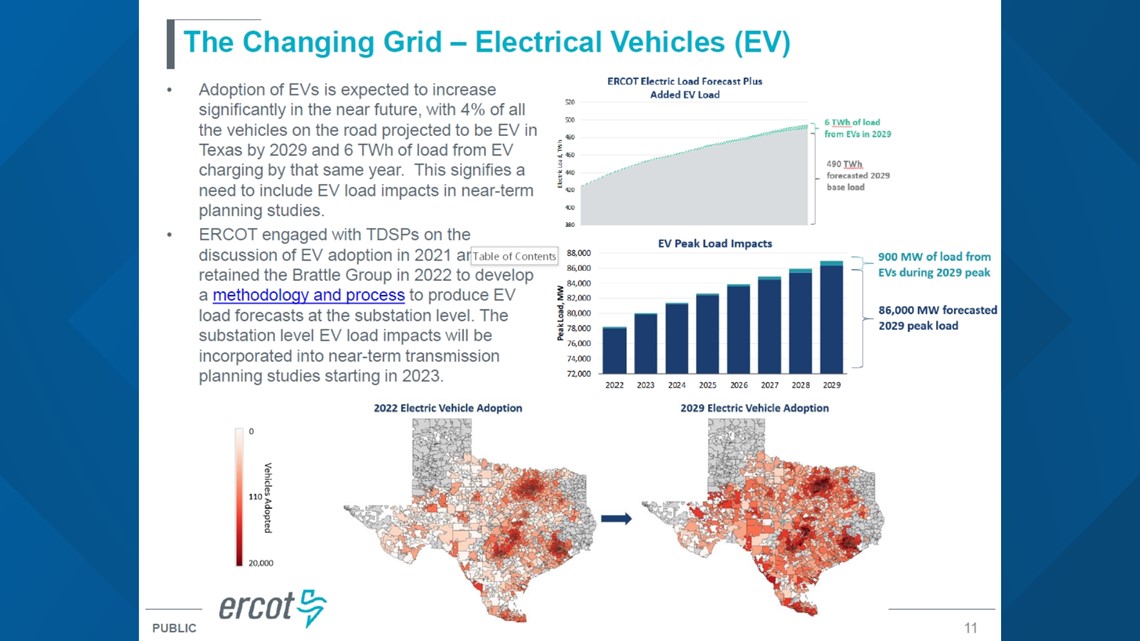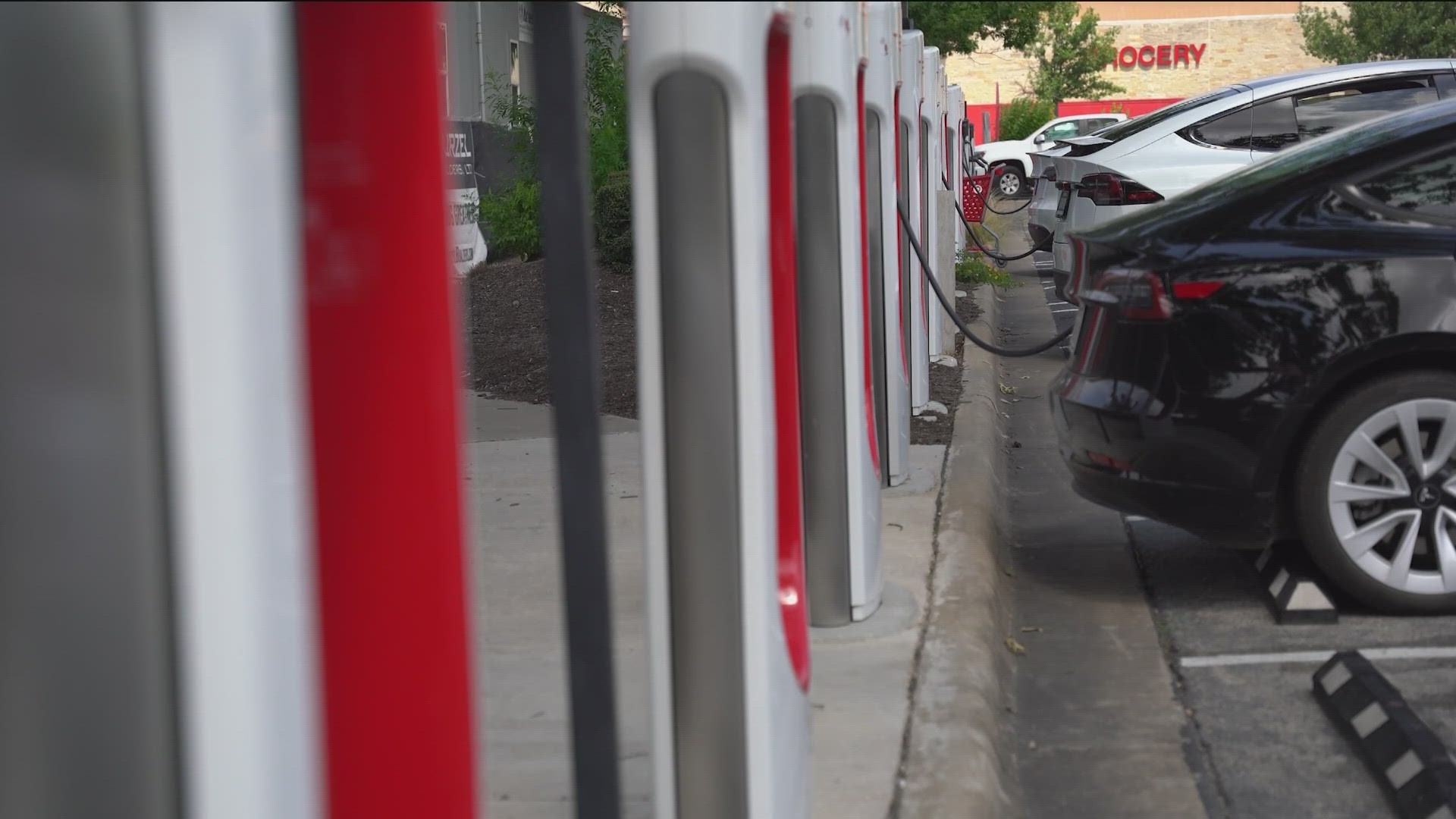AUSTIN, Texas — While the power grid in Texas handled a push for power, Texas Department of Motor Vehicle (DMV) registration records showed 202,802 light-duty electric vehicles (EVs) in the state on June 27.
The KVUE Defenders dug into how much energy EVs draw from the grid and how the state plans for future growth.
U.S. Department of Energy records showed most electric vehicles pull about 7.2 kilowatts or less from a typical home charger. It depends on the charging cycle.
For context, the DOE’s website showed 7.2 kilowatts is less than an electric furnace and more than a water heater.
Texas DMV data did include hybrid electric vehicles as part of all EVs registered in the state. But if the hybrid vehicles were all electric, the amount of electricity pulled from the power grid would still be less than 2% of the power grid’s summer capacity.
The Electric Reliability Council of Texas (ERCOT) manages most of the power grid in the state of Texas.
“Approximately 97,000 MW of summer-rated resource capacity is expected to be available for the summer peak load,” ERCOT wrote in its Seasonal Assessment of Resource Adequacy for the ERCOT Region (SARA) summer 2023 report.
Comparing the number of EVs to the supply of power doesn’t tell the full story.
Transmission constraints create a challenge in moving electricity across the power grid.
The growing demand of electricity from EVs is still a concern for ERCOT, power companies and lawmakers. ERCOT hired The Brattle Group to help create a methodology for determining the EV impact at the substation level.
“Adoption of EVs is expected to increase significantly in the near future, with 4% of all the vehicles on the road projected to be EV in Texas by 2029 and 6 TWh [terawatt hours] of load from EV charging by that same year. This signifies a need to include EV load impacts in near-term planning studies,” ERCOT’s Report on Existing and Potential Electric System Constraints and Needs, December 2022, showed.


The Texas Electric Vehicle Infrastructure Plan shows ERCOT estimates 1 million EVs in Texas by 2028. ERCOT will incorporate the EV impact in its planning from here on out.
“That's going to require upgrades and infrastructure. It is not to say that the benefits don't outweigh the costs, but we're just going to have to make sure that we have the ability to match that demand because it's coming,” Joshua Rhodes, Ph.D., a research scientist at University of Texas at Austin, told the KVUE Defenders in May 2022.
Part of those upgrades under consideration is how energy companies can utilize EV batteries to contribute to the grid during times of peak demand.
“The one I'm most excited about is as electric vehicles grow and grow and grow, those are just battery systems on wheels,” Cameron Freberg, Austin Energy Emerging Technology's program manager, told the KVUE Defenders in June 2022.
The idea is power customers would be able to opt in to a program allowing the power company to draw a set amount from the battery. The control would be similar to the demand response programs now with smart thermostats.
Doug Lewin with Stoic Energy said the number of EVs currently registered in Texas could power Houston for more than an hour.
“Very soon, 20% of the state’s auto sales will be EVs. That will add roughly 20 gigawatts of batteries to Texas garages every year,” Lewin wrote in his Texas Energy and Power newsletter.
Lewin said aggregating a collection of small-scale energy resources is a key to grid resiliency.
“EVs offer a local, house-by-house resource — one that’s coming anyway — that’ll help families and businesses keep the lights on in a future Uri or when ice storms or hurricanes knock out power lines. Add in local power sources like rooftop solar panels, wall-mounted batteries and small gas systems, and energy companies can keep the power flowing regardless of an outage’s cause at a much, much cheaper cost,” he wrote.
A statewide pilot project is underway and will run for three years.

